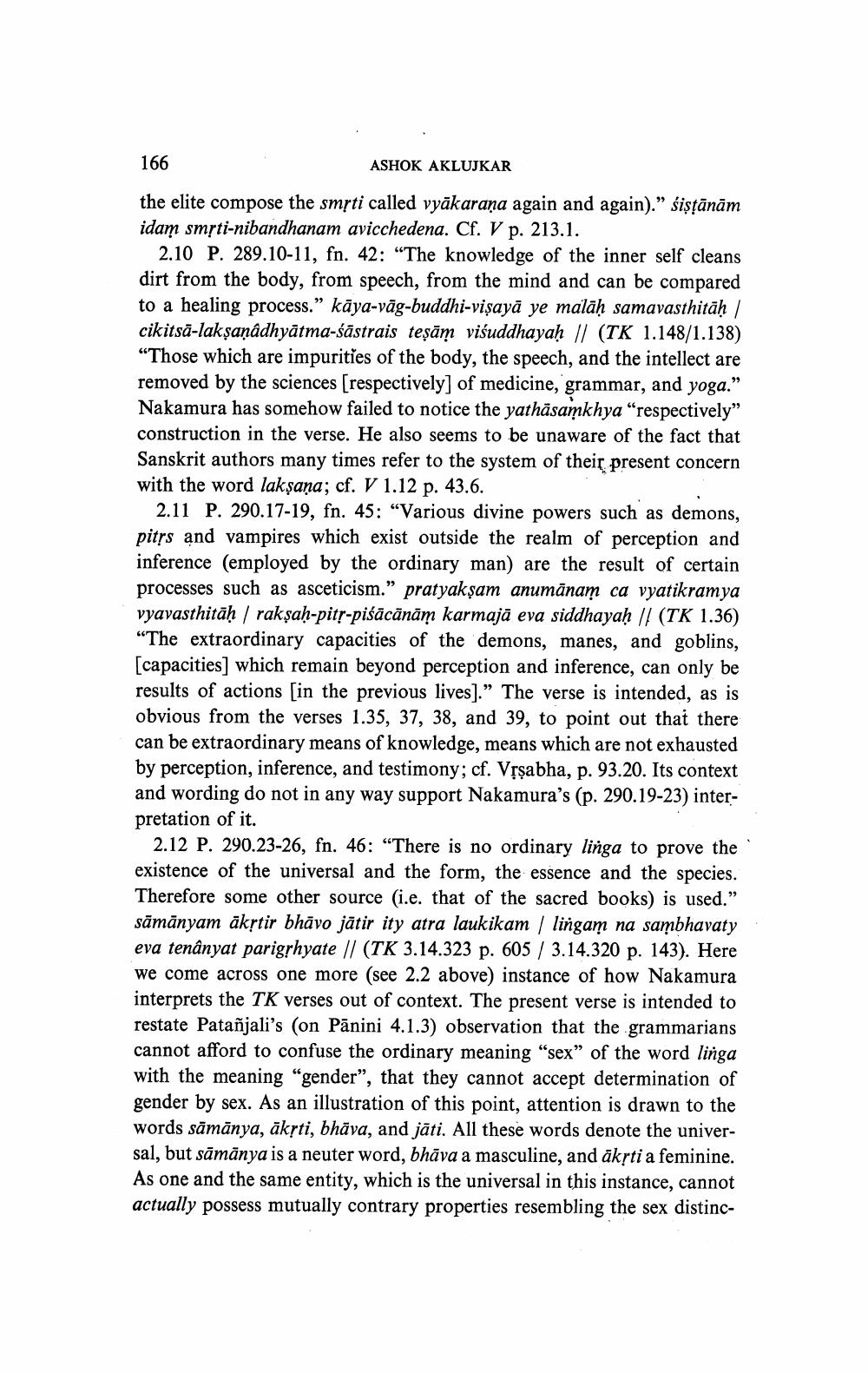Book Title: Nakamura On Bhartrhari Author(s): Ashok Aklujkar Publisher: Ashok Aklujkar View full book textPage 6
________________ 166 ASHOK AKLUJKAR the elite compose the smrti called vyäkarana again and again)." śiştānām idam smsti-nibandhanam avicchedena. Cf. V p. 213.1. 2.10 P. 289.10-11, fn. 42: "The knowledge of the inner self cleans dirt from the body, from speech, from the mind and can be compared to a healing process.” kāya-vāg-buddhi-viṣayā ye malāḥ samavasthitā) / cikitsa-lakşaņâdhyātma-śāstrais teşām viếuddhayaḥ || (TK 1.148/1.138) “Those which are impurities of the body, the speech, and the intellect are removed by the sciences (respectively) of medicine, grammar, and yoga." Nakamura has somehow failed to notice the yathāsamkhya “respectively” construction in the verse. He also seems to be unaware of the fact that Sanskrit authors many times refer to the system of their present concern with the word lakṣaṇa; cf. V 1.12 p. 43.6. 2.11 P. 290.17-19, fn. 45: "Various divine powers such as demons, pitys and vampires which exist outside the realm of perception and inference (employed by the ordinary man) are the result of certain processes such as asceticism.” pratyakşam anumānam ca vyatikramya vyavasthitāḥ / rakṣaḥ-pit?-piśācānām karmajā eva siddhayaḥ // (TK 1.36) "The extraordinary capacities of the demons, manes, and goblins, [capacities] which remain beyond perception and inference, can only be results of actions [in the previous lives).” The verse is intended, as is obvious from the verses 1.35, 37, 38, and 39, to point out that there can be extraordinary means of knowledge, means which are not exhausted by perception, inference, and testimony; cf. Vrsabha, p. 93.20. Its context and wording do not in any way support Nakamura's (p. 290.19-23) interpretation of it. 2.12 P. 290.23-26, fn. 46: "There is no ordinary linga to prove the existence of the universal and the form, the essence and the species. Therefore some other source (i.e. that of the sacred books) is used.” sāmānyam ākstir bhāvo jātir ity atra laukikam / lingam na sambhavaty eva tenânyat parigrhyate // (TK 3.14.323 p. 605 / 3.14.320 p. 143). Here we come across one more (see 2.2 above) instance of how Nakamura interprets the TK verses out of context. The present verse is intended to restate Patañjali's (on Panini 4.1.3) observation that the grammarians cannot afford to confuse the ordinary meaning "sex" of the word linga with the meaning "gender”, that they cannot accept determination of gender by sex. As an illustration of this point, attention is drawn to the words sāmānya, akyti, bhāva, and jāti. All these words denote the universal, but sämänya is a neuter word, bhāva a masculine, and äkrti a feminine. As one and the same entity, which is the universal in this instance, cannot actually possess mutually contrary properties resembling the sex distincPage Navigation
1 ... 4 5 6 7 8 9 10 11 12 13 14 15
